


Iran, Persia, Pars, you have heard them all, a country as old as the history itself and as beautiful as eyes can perceive. Here you can visit glorious ancient structures like Persepolis, you can visit most amazing natural beauties like Harra mangroves, you can climb high mountains like Alborz, or just have a cup of tea in Hāfiz Garden, you can swim in the Caspian Sea, or if you want to swim in winter season why not do that in Kish Island, where you can do your shopping too. In Iran you will experience different cultures and religions, with a hospitality you have never seen before.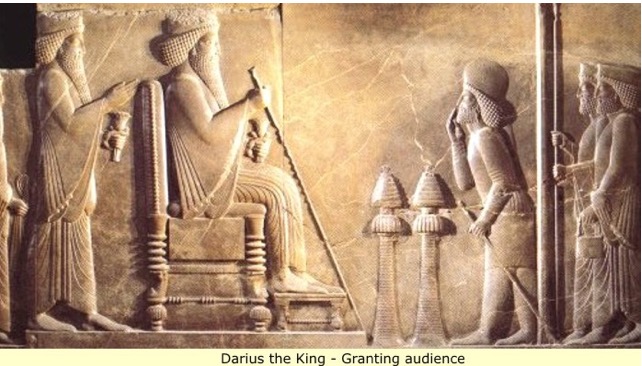 This country is home to one of the world’s oldest civilizations. The first dynasty in Iran formed during the Elamite kingdom in 2800 BC. The Iranian Medes unified Iran into an empire in 625 BC. They were succeeded by the Iranian Achaemenid Empire, the Hellenic Seleucid Empire and two subsequent Iranian empires, the Parthians and the Sassanids, before the Muslim conquest in 651 AD. Iranian post- Islamic dynasties and empires expanded the Persian language and culture throughout the Iranian plateau.
This country is home to one of the world’s oldest civilizations. The first dynasty in Iran formed during the Elamite kingdom in 2800 BC. The Iranian Medes unified Iran into an empire in 625 BC. They were succeeded by the Iranian Achaemenid Empire, the Hellenic Seleucid Empire and two subsequent Iranian empires, the Parthians and the Sassanids, before the Muslim conquest in 651 AD. Iranian post- Islamic dynasties and empires expanded the Persian language and culture throughout the Iranian plateau.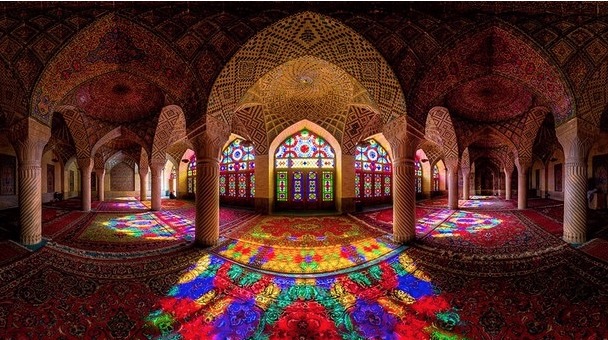 The 18th-largest country in the world in terms of area at 1,648,195 km2 (636,372 sq mi), Iran has a population of around 75 million. Its wildlife is composed of several animal species including bears, gazelles, wild pigs, wolves, jackals, panthers, Eurasian Lynx, and foxes. Domestic animals include sheep, goats, cattle, horses, water buffalo, donkeys, and camels. The pheasant, partridge, stork, eagles and falcon are also native to Iran.
The 18th-largest country in the world in terms of area at 1,648,195 km2 (636,372 sq mi), Iran has a population of around 75 million. Its wildlife is composed of several animal species including bears, gazelles, wild pigs, wolves, jackals, panthers, Eurasian Lynx, and foxes. Domestic animals include sheep, goats, cattle, horses, water buffalo, donkeys, and camels. The pheasant, partridge, stork, eagles and falcon are also native to Iran.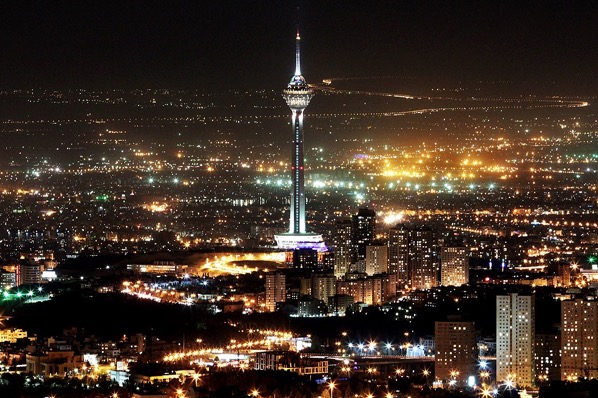 Tehran is the capital of Iran. With a population of 12,223,598 it is also Iran’s largest urban area and city, the largest city in Western Asia and the 5th largest city globally. The city is home to many historic mosques, churches, synagogues and Zoroastrian fire temples. Contemporary Tehran is a modern city featuring many structures, of which the Azadi (Freedom) Tower and the Milad Tower have come to be symbols of Tehran itself. Tehran features a semi-arid, continental climate. Tehran’s climate is largely defined by its geographic location, with the towering Alborz Mountains to its north and the central desert to the south. It can be generally described as mild in the spring and autumn, hot and dry in the summer, and cold in the winter.
Tehran is the capital of Iran. With a population of 12,223,598 it is also Iran’s largest urban area and city, the largest city in Western Asia and the 5th largest city globally. The city is home to many historic mosques, churches, synagogues and Zoroastrian fire temples. Contemporary Tehran is a modern city featuring many structures, of which the Azadi (Freedom) Tower and the Milad Tower have come to be symbols of Tehran itself. Tehran features a semi-arid, continental climate. Tehran’s climate is largely defined by its geographic location, with the towering Alborz Mountains to its north and the central desert to the south. It can be generally described as mild in the spring and autumn, hot and dry in the summer, and cold in the winter.
Preliminary Entry must be received by 25th August, 2015. The Preliminary Entry must include the events to be entered, the total number of athletes in the team, and the number of officials accompanying the team.
Final Entry is due by 20th September, 2015. The completed Final Entry must include all necessary information for each crew, including name with date of birth of each athlete, all team members and substitutes and officials.
Entry Forms for Preliminary and Final Entries are attached to this Bulletin. These should be filled in and forwarded to the Organizing Committee, with a copy to ARF headquarters, by the stipulated date.
Please note: If any crew withdraws from 3 hours before the draw until the end of the regatta, it will be fined 80 USD or equivalent. It is only accepted due to medical reason approved by the event doctor.
Opening Time of Course
Azadi Lake will be officially open from Monday 10th November for crews to train. The course will open each day between 7:00 AM and 6:00 PM
Weather in November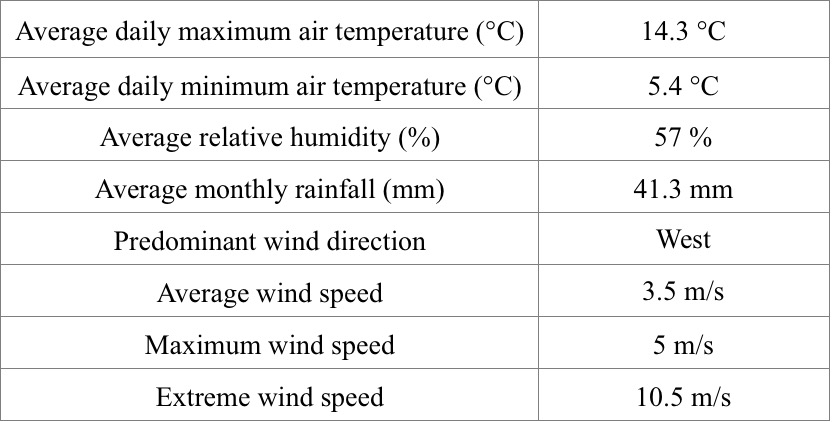 Boats and Equipment
Boats and Equipment
All boats and other equipment must comply with FISA Rules of Racing.
The OC will provide boats for rental in each event. Requests for renting boats should be notified in the attached Boat and Oars Rental Form on or before 25th August, 2015.
Rental boats will be allocated by random boat draw.
The boat rental charges are as follows (USD/ per boat / per day):
Single scull (1x) $30
Double scull (2x) $40
The blades of all oars/sculls must be painted on both sides in the colors of the respective Federations.
Though oars and sculls can be provided upon request ($10 USD/ per day), each team is highly recommended to bring their own oars and sculls.
Teams wishing to transport their own boats to Tehran should notify the Organizing Committee at an early stage.
Accreditation
In order to reduce the time taken for accreditation processing, all teams are requested to complete the accreditation forms and send these to the Organizing Committee together with digital passport size photographs of each team member before 20th October, 2015. This should include coaches and team officials.
Deadlines
Annex 1: Preliminary Entry Form--------------------------25th August, 2015
Annex 2: Hotel Reservation--------------------------------25th August, 2015
Annex 3: Final Entry & Boat & Oar Rental Form----------25th August, 2015
Annex 4: Final Entry By Name And Boat-----------------20th September, 2015
Annex 5: Visa Application Form---------------------------20th September, 2015
Annex 6: Accreditation Form-Athletes--------------------20th October, 2015
Annex 7: Accreditation Form-Officials--------------------20th October, 2015
Annex 8: Arrival and Departure ---------------------------20th October, 2015
The Azadi Sport Complex is the national sports complex of Iran based in Tehran. It is the biggest sports complex in Iran. The massive Azadi Stadium is located within the walls of this complex.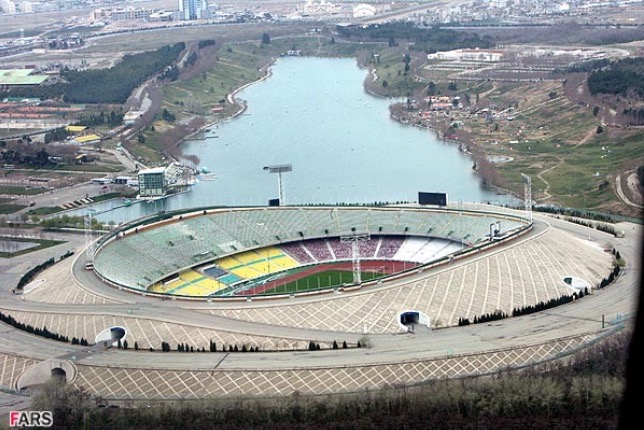 The Azadi Lake which is placed inside the complex was the host venue of Asian Canoe Sprint Championships 2002, 2009, 2011, Asian Canoe Slalom Championships 2002, Asian Canoe Polo Championships 2002, 2011 and World Para Canoe Championships 2002.
The Azadi Lake which is placed inside the complex was the host venue of Asian Canoe Sprint Championships 2002, 2009, 2011, Asian Canoe Slalom Championships 2002, Asian Canoe Polo Championships 2002, 2011 and World Para Canoe Championships 2002.
Time Schedule of the Cup Program:
1000m
Heat & Repechage 12th November
Semi-final & Final 13th November
500m
Heat & Repechage 14th November
Semi-final & Final 15th November
Schedule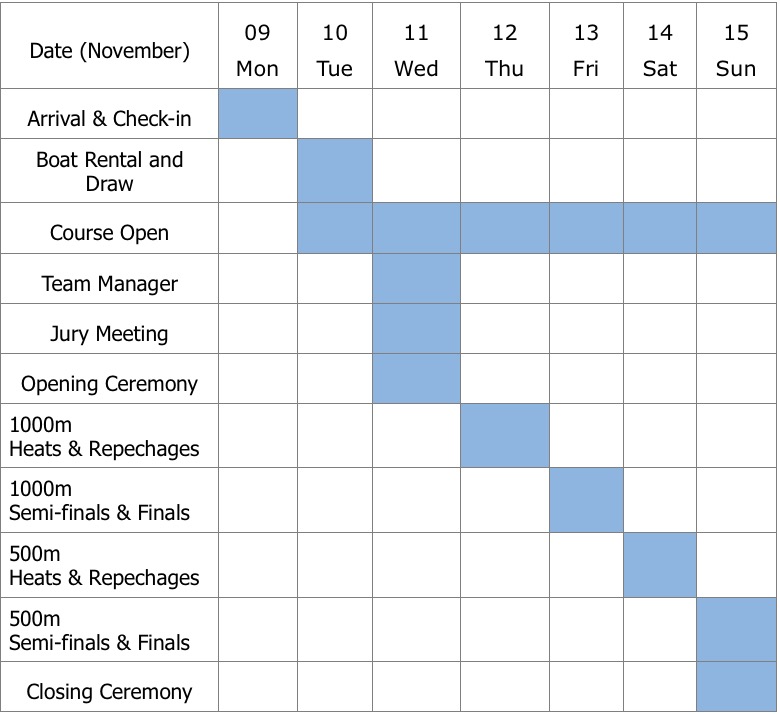 (Note: This schedule is preliminary and some items may be subject to change. Changes will be notified to all Federations.)
(Note: This schedule is preliminary and some items may be subject to change. Changes will be notified to all Federations.)
Events
The Asian Rowing Cup 2 will consist of the following events:
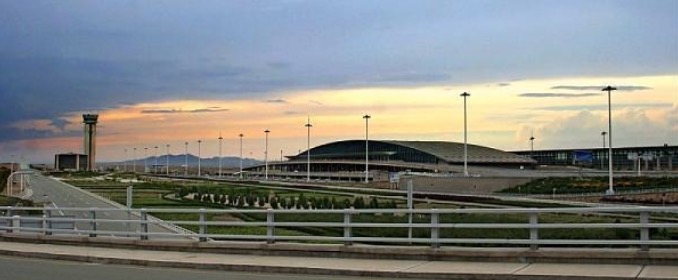 The most common and recommended way to get to Tehran is through “Imam Khomeini International Airport (IKA)”. The airport is located about 30 kilometers (19 mi) southwest of the city. IKA is equipped with the ILS since August 2009 and obtained the international certificate of Integrated Management System (IMS). IMS includes OHSAS 18001, ISO 14001: 2004 and ISO 9001, which are issued for safety and professional hygiene, protecting the environment and the quality of management respectively.
The most common and recommended way to get to Tehran is through “Imam Khomeini International Airport (IKA)”. The airport is located about 30 kilometers (19 mi) southwest of the city. IKA is equipped with the ILS since August 2009 and obtained the international certificate of Integrated Management System (IMS). IMS includes OHSAS 18001, ISO 14001: 2004 and ISO 9001, which are issued for safety and professional hygiene, protecting the environment and the quality of management respectively. Imam Khomeini Airport is accessible from Tehran by Car, taxi and bus via the Tehran-Qom Freeway. An airport access road connects the freeway to the airport terminal.
Transport
Teams will be greeted at the Tehran Imam Khomeini International Airport upon arrival and escorted to their hotel. For this purpose all teams should fill in and send the form of the Last Transport Information to the Organizing Committee before 20th October, 2015.
Accommodation
Bookings should be made through the Organizing Committee by 25th August, 2015. The hotel reservation form is attached with this bulletin. Hotel Cost (including transport and all meals) is payable to the Organizing Committee and due on arrival and no later than prior to the first race.
Olympic Hotel (4 Stars):
Single Room:130 USD per person per day
Double Room:70 USD per person per day
Azadi Sport Dormitory:
4-6 Beds Room:35 USD per person per day
(Availability is limited, and we therefore advise you to apply early as accommodation is booked on a first come first served basis)
Committee Chairs:
Events Committee: Edy Suyono
Umpiring Committee: LIANG Bing
Competitive Committee: Chris Perry
Marketing & Promotion Committee: Wang,Ching-Tang
Rowing Development Committee: Admiral Chainarong Charoenruk
Para Rowing Committee: Seung-Hoon HAN
Tel: +86-10-67113681
Fax: +86-10-67112793
E-mail: office_arf @sports.cn
Iran Canoe, Rowing & Sailing Federation
President: Gholamreza AMINI
Secretary General: Vahid MORADI
Tel: +98-21-44739135
Fax: +98-21-44739136
E-mail: crsf@msy.gov.ir
Organizing Committee
Person in charge: Mr. Mohammadreza Dorkhah
Mobile: +98-912-6197262
Fax: +98-21-44739136
E-mail: mohammadreza_dorkhah@yahoo.com
International Jury
The International Jury members will be appointed by ARF Umpiring Committee.
Visa
For details of visa requirements and application, please complete the visa application form and send these with the scanned passport’s copies to the Iran Federation before 20th September, 2015.
Person in Charge: Mr. Mohammadreza Dorkhah
Phone: +98-21-44739135
Mobile: +98-912-6197262
E-mail: crsf@msy.gov.ir
| Cookie | Duration | Description |
|---|---|---|
| cookielawinfo-checkbox-analytics | 11 months | This cookie is set by GDPR Cookie Consent plugin. The cookie is used to store the user consent for the cookies in the category "Analytics". |
| cookielawinfo-checkbox-functional | 11 months | The cookie is set by GDPR cookie consent to record the user consent for the cookies in the category "Functional". |
| cookielawinfo-checkbox-necessary | 11 months | This cookie is set by GDPR Cookie Consent plugin. The cookies is used to store the user consent for the cookies in the category "Necessary". |
| cookielawinfo-checkbox-others | 11 months | This cookie is set by GDPR Cookie Consent plugin. The cookie is used to store the user consent for the cookies in the category "Other. |
| cookielawinfo-checkbox-performance | 11 months | This cookie is set by GDPR Cookie Consent plugin. The cookie is used to store the user consent for the cookies in the category "Performance". |
| viewed_cookie_policy | 11 months | The cookie is set by the GDPR Cookie Consent plugin and is used to store whether or not user has consented to the use of cookies. It does not store any personal data. |
